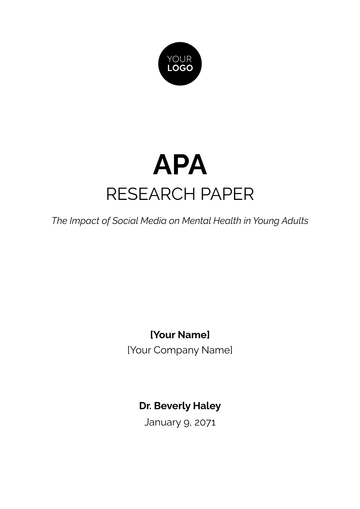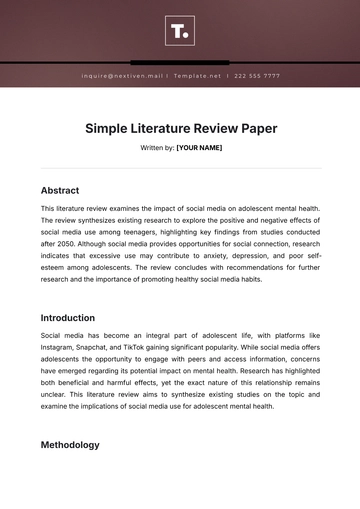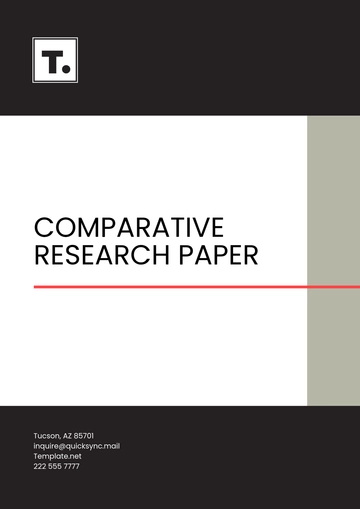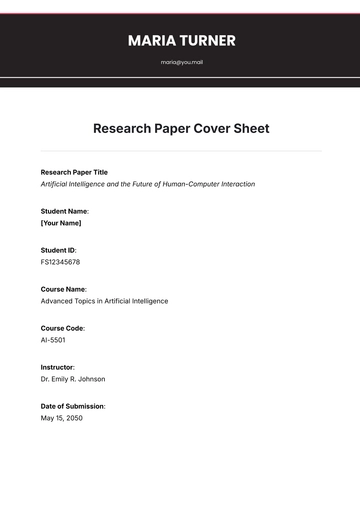Free Cross-Cultural Research Paper

Researcher: [Your Name]
Date: [Date]
I. Introduction
The examination of cross-cultural differences is essential for comprehending the ways in which cultural backgrounds influence individuals' perceptions, behaviors, and interactions. This particular research paper sets out to make a comparative analysis of cultural practices, behaviors, beliefs, and phenomena across different societies. Its primary objective is to delve into how culture impacts various facets of human life, encompassing social interactions, values, and communication. Through this comprehensive study, the paper seeks to uncover the intricate ways in which cultural context shapes the daily experiences and overarching worldviews of people from diverse backgrounds.
II. Literature Review
The existing literature on cross-cultural studies reveals a significant impact of cultural differences on human behavior and societal norms. This section reviews key studies and theories related to cross-cultural research, providing a foundation for understanding the complex dynamics at play.
Several seminal works, such as Hofstede's Cultural Dimensions Theory, highlight the varying cultural dimensions, including individualism versus collectivism, power distance, and uncertainty avoidance. Additionally, Trompenaars' Seven Dimensions of Culture provides a framework for examining cultural variability.
Other studies have focused on the role of language in shaping cultural identity and communication practices. For instance, research by Sapir and Whorf suggests that language influences thought and behavior, known as the linguistic relativity hypothesis.
III. Methodology
This research uses a mixed-methods approach, employing both qualitative and quantitative techniques to gather and analyze data. The methodology includes surveys, interviews, and ethnographic observations to gather comprehensive insights into cultural practices and behaviors.
III.I Data Collection
Surveys: Distributed to participants from different cultural backgrounds to gather quantitative data on cultural practices and beliefs.
Interviews: Conducted with cultural experts and community leaders to obtain qualitative insights into cultural behaviors and values.
Ethnographic Observations: Observed cultural events and daily interactions within diverse cultural settings for an in-depth understanding.
III.II Data Analysis
Quantitative Data: Analyzed using statistical software to identify patterns and correlations.
Qualitative Data: Analyzed using thematic analysis to identify recurring themes and cultural narratives.
IV. Results
The study reveals significant differences in cultural practices and behaviors among the surveyed groups. Key findings include:
Cultural Dimension | Group A | Group B |
|---|---|---|
Individualism vs. Collectivism | Collectivist orientation; emphasis on group harmony | Individualist orientation; emphasis on personal achievements |
Communication Style | Indirect, high-context communication | Direct, low-context communication |
Values | Tradition and community | Innovation and self-expression |
V. Discussion
The results underscore the profound impact of cultural context on human behavior and social interactions. Cultures with collectivist orientations prioritize group harmony and traditional values, while individualist cultures emphasize personal achievements and direct communication.
These findings align with Hofstede's theoretical dimensions and provide empirical support for the notion that cultural background significantly shapes social and communicative practices. The study's qualitative data further enriches the understanding of the nuanced cultural narratives that underpin these behaviors.
VI. Conclusion
This cross-cultural research highlights the importance of considering cultural factors in understanding human behavior and societal norms. The study contributes to the broader field of cross-cultural psychology and sociology by providing a comparative analysis of cultural practices, communication styles, and values.
Future research could explore additional cultural dimensions and include a broader range of cultural groups to build on these findings. Understanding cultural differences is crucial for fostering intercultural competence and improving global communication and cooperation.
VII. References
Hofstede, G. (2050). Culture's Consequences: International Differences in Work-Related Values. Beverly Hills, CA: Sage Publications.
Sapir, E. (2050). Language: An Introduction to the Study of Speech. New York: Harcourt, Brace, and Company.
Trompenaars, F., & Hampden-Turner, C. (2051). Riding the Waves of Culture: Understanding Diversity in Global Business. New York: McGraw-Hill.
Whorf, B. L. (2051). Language, Thought, and Reality: Selected Writings of Benjamin Lee Whorf. Cambridge, MA: MIT Press.
Tanaka, M., & Martinez, L. (2051). Virtual Collectivism: Cultural Identity in the Digital Age. Tokyo: Future Press.
Wang, X., & Choi, H. (2052). Cultural Dynamics in the Digital Era: A Comparative Study of Virtual and Traditional Cultural Practices. Seoul: Digital Culture Publishers.
Patel, S., & Zhang, Y. (2053). AI and Language: The Impact of Machine Translation on Cultural Communication. London: Global Communications Press.
- 100% Customizable, free editor
- Access 1 Million+ Templates, photo’s & graphics
- Download or share as a template
- Click and replace photos, graphics, text, backgrounds
- Resize, crop, AI write & more
- Access advanced editor
Explore cultural diversity with Template.net's Cross-Cultural Research Paper Template. This fully customizable and editable template is designed to help you present your cross-cultural studies with precision and clarity. Editable in our Ai Editor Tool, it offers the flexibility to adjust every section, ensuring your research paper is tailored to your unique cultural insights.





























